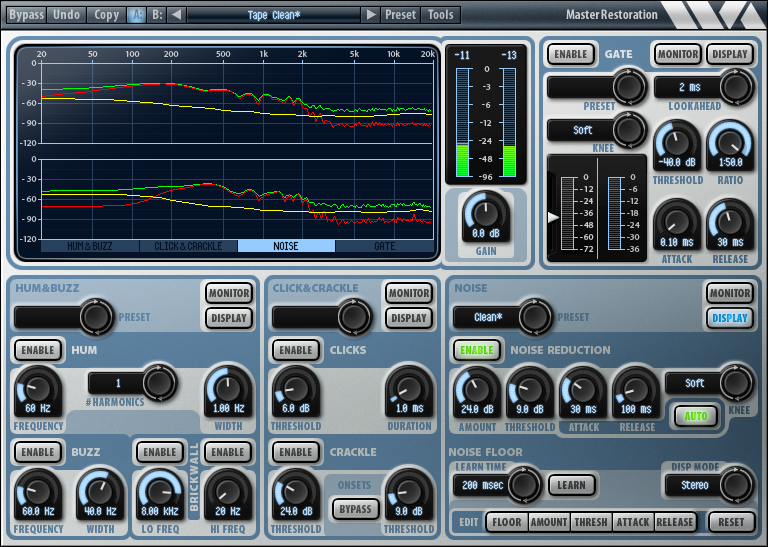
So does ground hum, computer noise, and any number of unwanted sonic artifacts. Should you know of anything that we have not listed here let us know.
#WAVES X NOISE CRACK DOWNLOAD#
Download Free Waves AU VST Plugins & VSTi Instruments Here is our colection of FREE software, VST plugins, VSTi instruments, audio utilities and DAWs. From synth VSTs and drum VSTs to VST effects, this huge list has only the best of the best plugins. Get the 200 best free VST plugins ever made. From essentials like reverb, compression, noise reduction and EQ to modeling analog devices, ambient and post-production tools.
#WAVES X NOISE CRACK CRACK#
Overview: Waves Plugins VST Crack has the best of the winning Waves GRAMMY® plugins. Waves Plugins Crack are rightly considered one of the best and they will instantly connect to your work project and be ready to use.Update your waves now. Analyze a section where the background noise is present and pull up the threshold fader above the input and slide up the reduction fader until the background noise is gone. The editor was George Grow.X-Noise is a must-have to eliminate that background noise and it can enhance your audio dramatically. Jonathan Evans wrote the story for Learning English. VOA’s George Putic researched and prepared this report. The damaged materials could then be replaced before they fail. The technology could help safety inspectors get more detailed estimates of damage in materials like aircraft parts and bridge supports. He says the phased array system uses only one piece of equipment to get both a linear and nonlinear image. "By using this novel approach we can now pick up a crack close to a hole, which is directly relevant, to say, aerospace applications, where they're worried about cracks growing from rivet holes, things like that."
Openings that large would create one big echo. A linear system would not be able to identify cracks forming around the rivet openings. Croxford tested the system on part of a wing from a passenger airplane, an Airbus A320 aircraft. "The nonlinear approach means that you can actually hear something from them, you're listening to different effects, rather than listening for just that echo from the crack." Croxford says his ‘phased array' system of sending out sound waves returns harmonics - echoes of different frequencies. In other words, you would hear the same frequency coming back from the object. A linear system creates echoes, or similar versions, of the sound wave sent into the material.

If you have a gap in between it, you get reflections off the edge of it, but you don't really know how big it is."Īnthony Croxford says this method is unlike a purely linear system. "It lets you see smaller cracks, closed cracks, so when I say closed cracks, you can magine if you have a crack in a piece of metal, it could be a bit open like that, it could have a gap in between it. Croxford says, they listen and study echoes of the sound waves to identify the smallest cracks. They begin their research by sending hundreds of different ultrasonic waves into a structure.

Their method involves using sound imaging.Īnthony Croxford leads the team of scientists at Bristol University. Researchers in Britain say they have discovered a new way to identify cracks inside metal parts before they fail. Investigators found that undersized metal parts of the bridge simply could not support the heavy load.įinding hidden cracks and other weak areas in large structures can be the difference between life and death.

The bridge collapse took place during rush hour - when a lot of cars and trucks were on the road. Thirteen people died and more than 140 others were injured. On August 1, 2007, a steel bridge in Minneapolis, Minnesota, collapsed, sending people and vehicles into the Mississippi River.


 0 kommentar(er)
0 kommentar(er)
